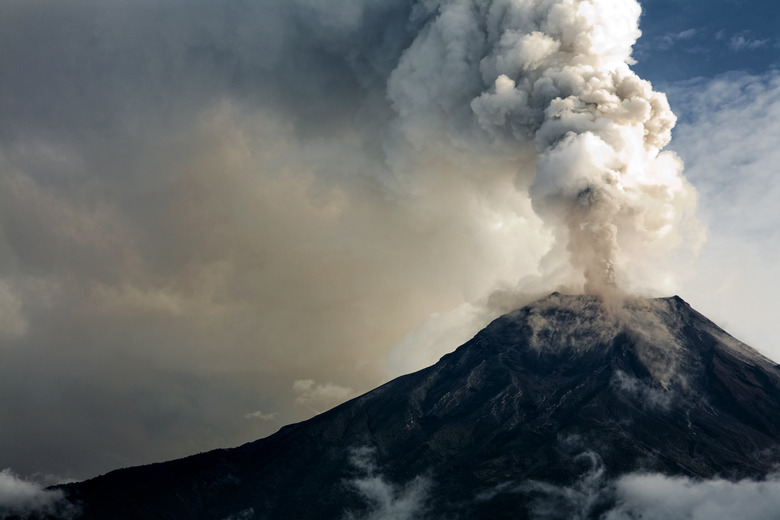Examples Of Natural Disasters & The Environmental Changes Incurred
Natural disasters can cause drastic environmental changes and if severe enough, even mass extinctions. The environment is comprised of the surroundings and conditions where a person, animal or plant thrives. Natural disasters have been occurring since the formation of Earth 4.6 billion years ago. The mass extinction of dinosaurs is thought to be the result of a large asteroid impact and possibly increased volcanism approximately 65 million years ago that caused catastrophic environmental damage from global forest fires, blocking out the sun and increased levels of carbon dioxide in the atmosphere. By examining previous natural disasters and their environmental impacts we can learn what to expect in the future.
Volcanoes
Volcanoes
A volcano is caused by extreme pressures inside of Earth that causes the ejection of pyroclastic materials including rocks, lava, hot gas and ash into the atmosphere. On April 5, 1815, Mount Tambora, on the island of Sumbawa, Indonesia, became the largest volcanic eruption in recorded history ejecting a huge ash cloud into the atmosphere over a period of several days. By 1816, the ash had circled the Earth creating what was known as "the Year Without Summer." Climate changed causing unseasonably cooler temperatures including frost during the summer in the United States. In both the United States and Europe, there were severe reductions in crop productivity from abnormal precipitation patterns which led to famine that killed 71,000 people.
Earthquakes
Earthquakes
Earthquakes are sudden energy releases in Earth's crust. These earthquakes can send out violent seismic waves that destroy buildings, displace land masses and change soil characteristics. A 7.8 magnitude earthquake struck on July 27, 1976, in Tangshan, China killing nearly 500,000 people. Liquefaction, soil strength reduced by water pressure, deformed the soil layers which caused many buildings to collapse since the soil could no longer support their foundations. The large number of dead bodies also increased the risk of human and animal borne disease transmission.
Tsunamis
Tsunamis
March 11, 2011, a magnitude 9.0 earthquake hit off the east coast of Japan triggering a tsunami wave that rose over 100 feet high and traveled almost 6 miles inland. Tsunamis can occur when water becomes displaced during quake activity causing damage to crops, pollution of freshwater resources and displacement of humans and animals due to habitat destruction. Japan's Fukushima Daiichi nuclear power plant disaster occurred in part due to the earthquake and tsunami causing power failure and disabling the cooling system of the reactors releasing deadly radiation into the ocean and atmosphere.
Hurricanes
Hurricanes
Hurricanes can cause numerous environmental impacts from soil damage to water pollution and climate change. The turbulence created by rough seas and debris can muddy the water causing less sunlight to penetrate effecting the amount photosynthesis resulting in decreased dissolved oxygen and fish die-offs. Alternately, strong winds over the ocean can also increase nutrients in certain areas through upwelling, a process that brings nutrient rich water to the surface. On October 29, 2012, record storm-surge from hurricane Sandy hit the northeastern United States causing an estimated 11 billion gallons of untreated and partially treated sewage into many local waterways presenting an environmental health hazard.
Cite This Article
MLA
Alonzo, Ben. "Examples Of Natural Disasters & The Environmental Changes Incurred" sciencing.com, https://www.sciencing.com/examples-natural-disasters-environmental-changes-incurred-9407/. 13 March 2018.
APA
Alonzo, Ben. (2018, March 13). Examples Of Natural Disasters & The Environmental Changes Incurred. sciencing.com. Retrieved from https://www.sciencing.com/examples-natural-disasters-environmental-changes-incurred-9407/
Chicago
Alonzo, Ben. Examples Of Natural Disasters & The Environmental Changes Incurred last modified August 30, 2022. https://www.sciencing.com/examples-natural-disasters-environmental-changes-incurred-9407/
